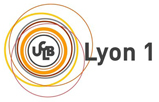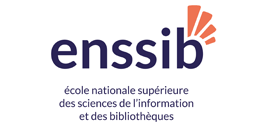New research collaboration to enrich public debate around “fake news”
LYON, FRANCE. Today sees the launch of a new research collaboration, A Field Guide to Fake News at the International Journalism Festival in Perugia, a gathering of thousands of journalists from across Europe and around the world.
The guide aims to enrich and stimulate public debate and responses to “fake news” online – by demonstrating innovative methods and approaches for tracing the production, circulation and reception of misinformation across the web and digital platforms. The first part is freely available online at: fakenews.publicdatalab.org
The guide is the first project of the Public Data Lab, a new interdisciplinary network to facilitate research, public engagement and debate around the future of the data society – which includes Tommaso Venturini (INRIA Dante, the Institut Rhônalpin des Systèmes Complexes and ENS de Lyon).
It has been undertaken in collaboration with First Draft (firstdraftnews.com), a non-profit initiative dedicated to improving skills and standards in the reporting and sharing of information that emerges online.
Aimed at journalists, researchers, students, civil society groups and public institutions, A Field Guide to Fake News takes a radically empirical approach to mapping “fake news”. It also suggests ways to turn the hype around fake news into an occasion to encourage the public exploration of digital media landscapes, platforms and collective life online.
The first portion of the field guide contains three methodological recipes for (1) mapping fake news hotspots on Facebook; (2) tracing the circulation of fake news on the web; and (3) mapping the political economy of fake news using tracker signatures. Further recipes will look at memes, bots, trolls and fact-checking initiatives.
A number of journalists and media organisations are already testing, using and exploring the approaches outlined in the guide. Earlier this week, BuzzFeed News drew on several of the methods and datasets in the guide in order to investigate the advertising trackers used on fake news websites.
Notes for Editors
- The first part of A Field Guide to Fake News is will be freely available online at: <fakenews.publicdatalab.org>. It is part of a larger research initiative on fake news and online misinformation.
- A preview is available at the following temporary link (please use the permanent link above when publishing about the guide): <bit.ly/FieldGuideToFakeNews_SamplePreview>
- It is launched on Friday 7th April 2017 at the International Journalism Festival in Perugia: <journalismfestival.com>
- It has been created by researchers at the Public Data Lab with the support of First Draft.
- The Public Data Lab is a new interdisciplinary network to facilitate research, public engagement and debate around the future of the data society. It develops and disseminate innovative research, teaching, design and participation formats for the creation and use of public data. More details at: <publicdatalab.org>.
- The guide included contributions from researchers based at the following institutions: the Centre for Journalism Studies, University of Ghent (Belgium); Citizen Data Lab, Amsterdam University of Applied Sciences (Netherlands); DensityDesign Lab, Politecnico di Milano (Italy); Digital Methods Initiative, University of Amsterdam (Netherlands); École Normale Supérieure de Lyon (France); Institut Rhônalpin des Systèmes Complexes (France); Institute for Policy Research, University of Bath (UK); Laboratoire d’Étude des Sciences et des Techniques, Université de Lausanne (Switzerland); Laboratoire Interdisciplinaire Sciences Innovations Sociétés, Université Paris-Est Marne-la-Vallée (France); the médialab, Sciences Po, Paris (France); Techno-Anthropology Lab, Aalborg University Copenhagen (Denmark); and the Media of Cooperation Research Group, University of Siegen (Germany).
- For a recent story produced by journalists at BuzzFeed News drawing on material from the guide, see: buzzfeed.com/craigsilverman/fake-news-real-ads?utm_term=.ftJAZdmpX
- High resolution images from the field guide are available at: bit.ly/FakeNewsFieldGuide
Contact
Tommaso Venturini: tommaso.venturini@ens-lyon.fr / tommaso.venturini@inria.fr +33 6 66 22 92 17










